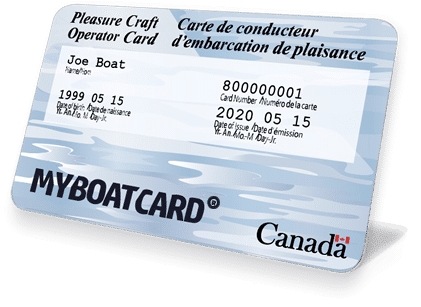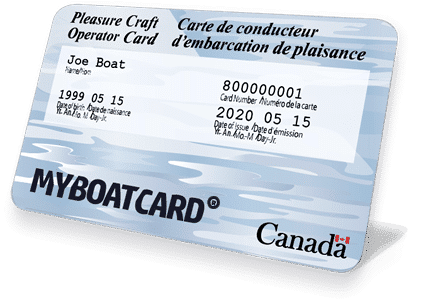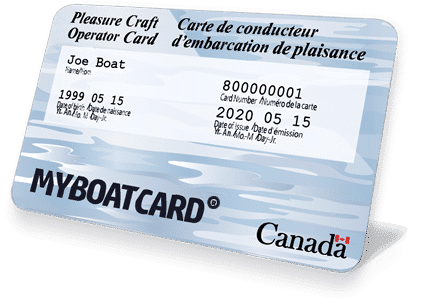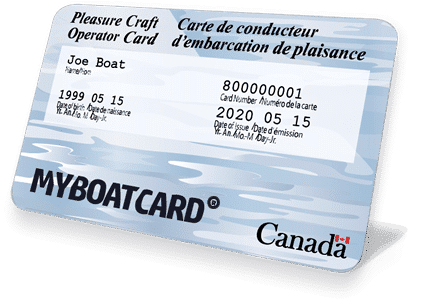The Top 3 Factors in Recreational Boating Deaths in Canada
According to the Drowning Prevention Research Centre’s most recent report on Recreational Boating-Related Fatalities in Canada, the top 3 factors in Recreational Boating Deaths in Canada are:
- Not Wearing A PFD or Lifejacket
Over 80% of individuals who died as the result of a recreational boating-related incident were not wearing a Personal Flotation Device (PFD) or lifejacket at the time of the incident. - Alcohol Consumption
Roughly 40% of individuals who were fatally injured in a recreational boating-related incident had consumed alcohol. - Cold Water and Poor Weather
Cold water (less than 15 degrees Celsius) and poor weather conditions including rough water and high winds were frequent causes contributing to recreational boating-related deaths.
Table of Contents
Recreational Boating-Related Fatalities in Canada Report (2021)
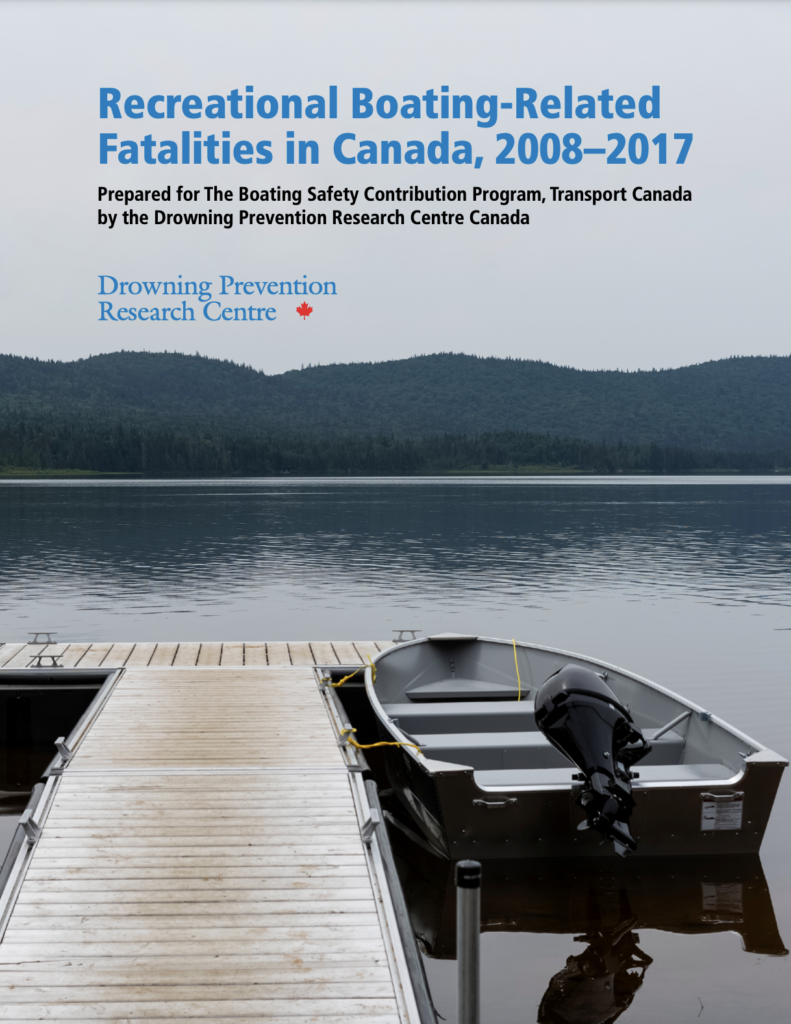 The Drowning Prevention Research Centre is the lead agency for drowning and water-incident research in Canada.
The Drowning Prevention Research Centre is the lead agency for drowning and water-incident research in Canada.
The Centre conducts research into fatal and non-fatal drowning, significant aquatic injury, and rescue interventions. The centre in conjunction with the Canadian Safe Boating Council, The Lifesaving Society, and Transport Canada has analyzed a decade of data on boating deaths in the country to determine the most common risk factors and make recommendations to improve boating safety.
Some of the report’s other main findings include:
- There were an average of almost 100 deaths per year in Canada related to recreational boating.
- On average 20% of all unintentional water-related fatalities in Canada, were recreational boating-related fatalities.
- Deaths primarily occurred among adults. 90% of recreational boating-related fatalities occurred among males.
- Lakes were the most frequent type of body of water where deaths occurred.
The Top 3 Factors : In More Detail
1. Not Wearing A PFD or Lifejacket
 Over 80% of individuals who died as the result of a recreational boating-related incident were not wearing a Personal Flotation Device (PFD) or lifejacket at the time of the incident. A PFD was worn properly in only 13% of recreational boating-related deaths.
Over 80% of individuals who died as the result of a recreational boating-related incident were not wearing a Personal Flotation Device (PFD) or lifejacket at the time of the incident. A PFD was worn properly in only 13% of recreational boating-related deaths.
Keeping a PFD within reach but not wearing it falls short of being a sufficient safety precaution. In situations where an individual unexpectedly goes overboard or their boat capsizes, especially under harsh weather conditions, it becomes extremely difficult to locate and put on a life jacket. Additionally, if a flotation aid is not worn a person might start to hyperventilate and accidentally breathe in water.
2. Alcohol Consumption
Roughly 40% of individuals who were fatally injured in a recreational boating-related incident had consumed alcohol. Alcohol consumption was most prevalent in young adults.
Alcohol’s effects on boat operators are often more pronounced than they realize due to environmental stressors. Even a small amount of alcohol can result in a boat operator being over the legal limit and can greatly affect an operator’s abilities, as it impairs judgment, diminishes motor skills, and hampers reaction times. Additionally, alcohol reduces the body’s resistance to cold, accelerating the onset of hypothermia.
The sun, wind, noise, vibration, and movement experienced while boating contribute to a condition known as boater fatigue, which can amplify the effects of alcohol by up to four times. Moreover, dehydration caused by heat and sun exposure increases the rate at which alcohol is absorbed into the system, further impairing the operator’s performance.
3. Cold Water Shock / Hypothermia
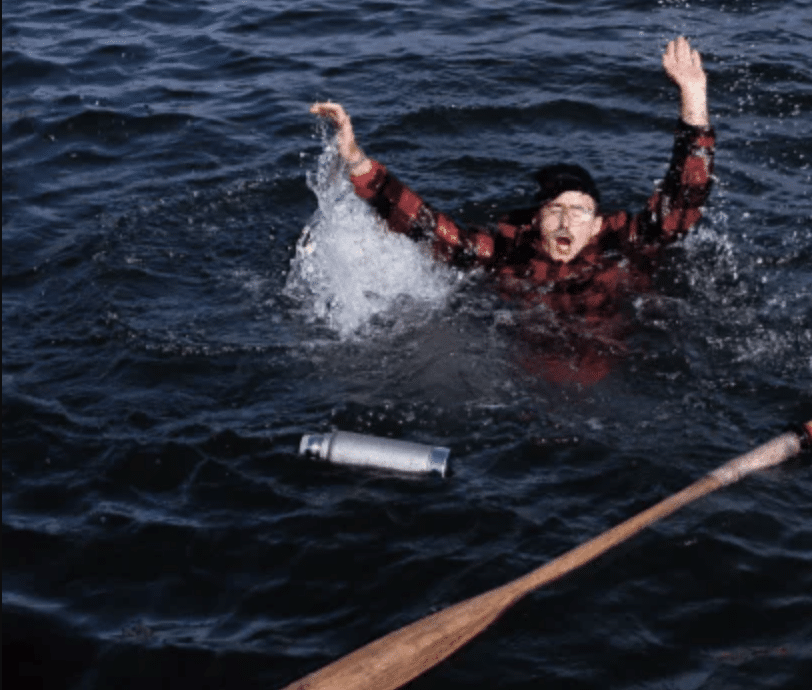 Cold water is prevalent in Canada. Capsizing and falling overboard into cold water results in a high number of boating fatalities in Canada. Cold water can paralyze your muscles instantly.
Cold water is prevalent in Canada. Capsizing and falling overboard into cold water results in a high number of boating fatalities in Canada. Cold water can paralyze your muscles instantly.
According to the Drowning Prevention Research Centre’s most recent report, most recreational boating-related deaths for which water temperature was known, occurred in cold or very cold water.
On average 50% of the recreational boating-related deaths occurred in very cold water (less than 10 degrees Celsius), 45% in cold water (10–20 degrees Celsius), and 5% occurred in warm water over 21 degrees Celsius.
| Water Temp °C | Loss of Dexterity | Unconscious | Time of Survival |
|---|---|---|---|
| 0.4 | Under 2 min. | Under 15 min. | Under 15 to 45 min. |
| 0.5 to 4.4 | Under 3 min. | 15 to 30 min. | 30 to 90 min. |
| 4.5 to 9.9 | Under 5 min. | 30 to 60 min. | 1 to 3 hrs. |
| 10 to 14.9 | 10 to 15 min. | 1 to 2 hrs. | 1 to 6 hrs. |
| 15 to 20.9 | 30 to 40 min. | 2 to 7 hrs. | 2 to 40 hrs. |
| 21 to 26.4 | 1 to 2 hrs. | 2 to 12 hrs. | 3 hrs. to indefinite |
| Over 26.5 | 2 to 12 hrs. | Indefinite | Indefinite |
Table of expected survival time based on water temperature. Table is for general reference only.
Hypothermia
Boaters’ risk of dying increases with cold water temperatures, especially sports enthusiasts who hunt and fish from boats in cold weather. Exposure to low temperatures (such as cold water immersion or prolonged exposure to cold weather) will lead to hypothermia.
Hypothermia is a drop in core body temperature below the normal level. It weakens a person’s muscles, reduces coordination, and slows mental functions. Hypothermia can lead to death.
To extend your survival time in water as much as possible, you must do everything you can to conserve energy and body heat. Wearing a PFD or lifejacket delays the onset of hypothermia. The PFD helps insulate the body. In addition, energy is lost trying to stay afloat without it.
Other contributing factors to boating deaths
Other significant contributors to boating fatalities include standing up in the boat, overloading the boat, boat collisions, performing dangerous maneuvers, poor boating safety knowledge and challenging environmental conditions are significant contributors to these incidents.
Recent Research and Statistics
Drowning Prevention Research Centre
Lifesaving Society
- 2023 Ontario Non-Fatal Drowning Report
- 2023 Ontario Fatal Drowning Report
- 2020 National Drowning Report
Canadian Red Cross
Recreational Boating Deaths : Infographics

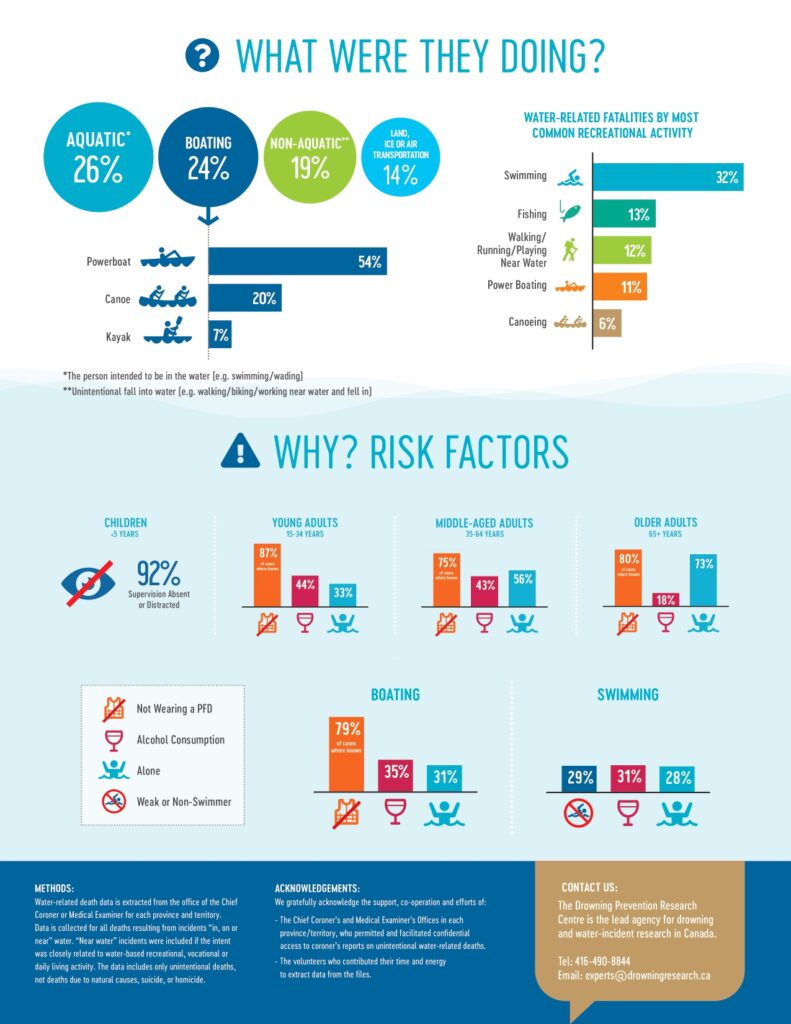
Lifesaving Society – 2020 National Drowning Report Infographic

Canadian Red Cross – Boating Fatalities in Canada Infographic
Recreational Boating Deaths in Canada : FAQ’s
What is the number one cause of death in boating in Canada?
Not wearing a lifejacket or Personal Flotation Device (PFD) is the number one cause of recreational boating deaths in Canada. Over 80% of individuals who died as the result of a recreational boating-related incident were not wearing a Personal Flotation Device or lifejacket at the time of the incident.
What causes 40 percent of boating deaths in Canada?
Alcohol consumption is the cause of roughly 40% of all recreational boating deaths in Canada.
The consumption of alcohol in a pleasure craft is much more dangerous than most people realize. Alcohol intensifies the effect of fatigue, sun, wind, and boat motion to adversely affect balance, judgment, and reaction time.
What was the type of incident caused the most recreational boating-related fatalities in Canada?
The highest frequency of recreational boating-related fatalities occurred when the person capsized (41%). Falling or being thrown overboard was also a common cause of recreational boating-related death (26%). Fewer incidents involved the watercraft being swamped (8%), a collision (6%), or the person who died jumping overboard (1%)
In what percentage of fatal boating accidents is falling overboard the main cause in Canada?
According to the Drowning Prevention Research Centre – falling overboard was the cause of 26% of recreational boating-related deaths.
Do more males or females die in boating incidents in Canada?
Historically more males than females die in boating incidents in Canada. 90% of recreational boating-related fatalities occurred among males.
Which provinces or territories in Canada have the highest boating death rates?
The highest number of recreational boating fatalities occur in the most populous provinces: Ontario (30 deaths/year), Quebec (19 deaths/year), and British Columbia (19 deaths/year).
From 2008–2017, average annual recreational boating-related fatality rates were highest in the Yukon (3.0 per 100,000), the Northwest Territories (1.8 per 100,000), and Newfoundland and Labrador (1.0 per 100,000).
What time of the year and day of the week do most recreational boating-related fatalities on?
Recreational boating-related fatalities most frequently occurred in the warmer months (May through August) and on weekends; the most common month for fatalities was July and the most frequent day was Saturday.
What type of boating activity causes the most fatalities?
The most frequent type of watercraft involved in recreational boating-related fatalities was a powerboat (51%). The majority (68%) of these involved a small powerboat (less than 5.5 meters in length). After powerboats, the next most common type of watercraft in recreational boating-related fatalities was a canoe (23%), followed by a kayak (7%).
Information in this FAQ section regarding statistics is provided from the publication : Drowning Prevention Research Centre – 2021 Recreational Boating-Related Fatalities in Canada
Get Certified. Stay Safe.
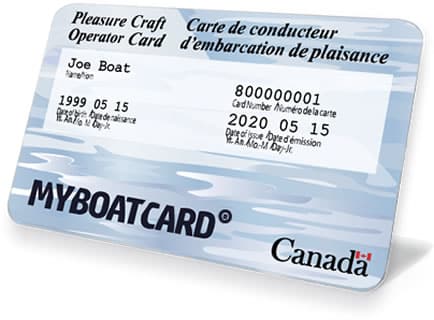 According to the Drowning Prevention Research Centre and the Canadian Red Cross, most recreational boating deaths are easily preventable and are the result of a lack of knowledge of the basic boating safety principles.
According to the Drowning Prevention Research Centre and the Canadian Red Cross, most recreational boating deaths are easily preventable and are the result of a lack of knowledge of the basic boating safety principles.
That’s why it’s so important to take a Canadian boater safety course and obtain your Canadian Boating License (PCOC). Try out the free boating license practice test.
MyBoatCard.com provides an online boating course designed to equip you with essential knowledge for staying safe on the water. Start your journey towards being a safer boater today!
Join the over 2 million certified Canadians, and get your boating license today!

